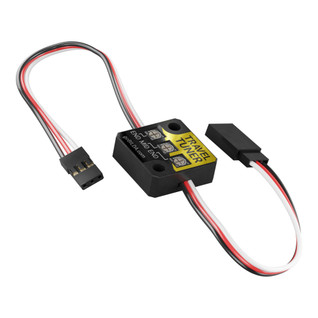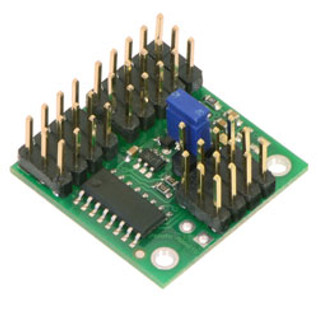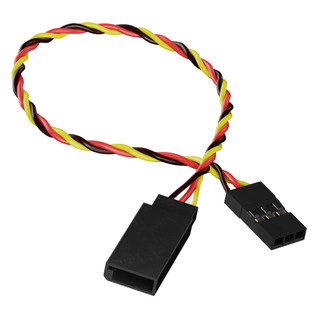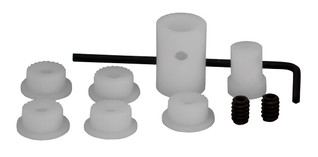SC1256TGP Standard Size Coreless Digital Servo
SKU:
$98.99
The SC1256TGP servo is a great servo for those looking to replace a standard servo with one that has superior specifications.
How Far Will This Servo Rotate?
The answer to this question is partially dependent on what you are using to control the servo.
Click for a quick video explanation.
With an Average Radio System:
102°
Your average transmitter and receiver will output a relatively narrow PWM signal range.
Radio System + Travel Tuner:
160°
Adding a Servo Travel Tuner to your radio system setup will allow you to achieve wide PWM signal ranges.
Wide Signal Controllers:
160°
Controllers such as the Servo Commander, Arduinos, and Raspberry Pi servo hats can usually send a wide signal.
Specs
| Output Shaft Style | H25T Spline |
|---|---|
| Voltage Range | 4.8V ~ 6.0V |
| No-Load Speed (4.8V) | 0.18 sec/60° |
| No-Load Speed (6.0V) | 0.15 sec/60° |
| Stall Torque (4.8V) | 222.2 oz-in (16.0 kg.cm) |
| Stall Torque (6.0V) | 277.7 oz-in (20.0 kg.cm) |
| Max PWM Signal Range | 800-2200μsec |
| Pulse Amplitude | 3-5V |
| Operating Temperature | -10°C to 50°C |
| Current Drain - idle (4.8V) | 5mA |
| Current Drain - idle (6.0V) | 5mA |
| Current Drain - no-load (4.8V) | 100mA |
| Current Drain - no-load (6V) | 120mA |
| Current Drain - stall (4.8V) | 4000mA (4.0A) |
| Current Drain - stall (6V) | 5000mA (5.0A) |
| Motor Type | Coreless |
| Output Shaft Support | Dual Ball Bearings |
| Gear Material | Titanium |
| Wire Length | 11.0" (279.4mm) |
| Weight | 1.8oz (52.4g) |
| Wire Gauge | 22 AWG |
| Max Rotation | 160° |
| Travel per µs | 0.114°/µsec |
| Direction with Increasing PWM Signal | Counterclockwise |



































